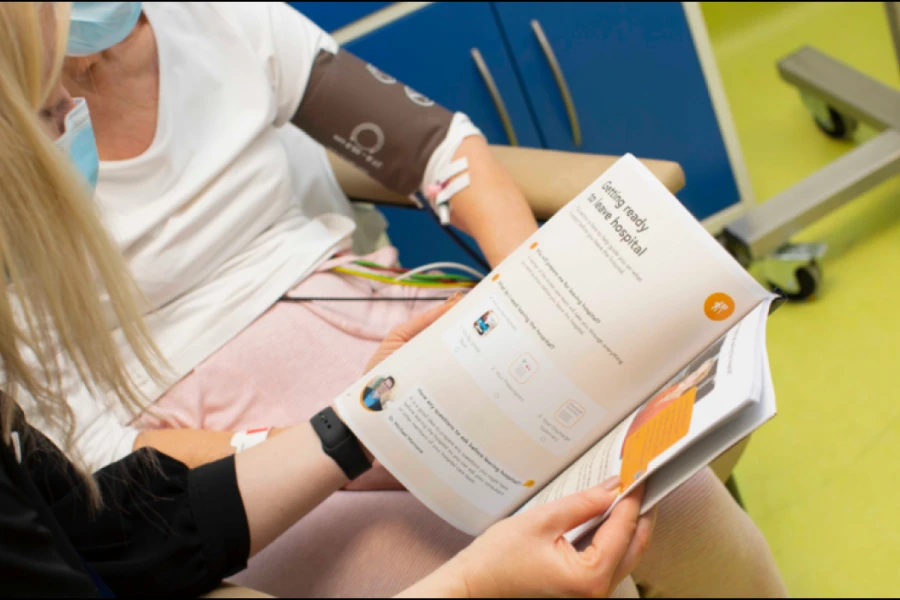In hospital
- Deepa Jose, Stroke Nurse Specialist
- 3 minute read
- Last updated: September 2023
This page explains your journey through the hospital if you have had a stroke. After emergency treatment, some people need to stay in hospital so that their recovery can be monitored and supported.

At the hospital

In most cases, you will be brought to the emergency department (ED) if you have symptoms of stroke. The staff will alert the stroke or medical team straight away, and you will be seen and assessed by a stroke registrar/medical registrar/ED registrar and perhaps by a stroke clinical nurse specialist..
The medical/nursing staff will get all the important details about your situation. They will ask about your:
- current symptoms and when they started
- medical history
- allergies
- current medications and when you last took them
This information can be provided by you, your family or caregiver or your GP or pharmacy.
The nursing staff will check your vital signs (blood pressure, heart rate, oxygen saturation, respiratory rate and temperature), insert an intravenous (IV) cannula and take blood. (An IV cannula is a thin, flexible tube that is inserted into your vein.)
Tests and treatments
After having a stroke or a TIA (transient ischaemic attack), you will need to have different tests and procedures. These tests help the stroke doctors understand what has happened and decide on the best treatments for you.
Learn more about the different tests and treatments
Stroke education
As part of your stroke treatment, the clinical nurse specialist (CNS) or medical team will talk to you about the type of stroke you had and how it impacted you as well as the diagnostic procedures you received and their outcomes. The stroke CNS will also give you information about how you can avoid having another stroke and what to do next.
This includes information about blood pressure and cholesterol management, specific diet changes, the impact of smoking and excessive alcohol intake, driving restrictions, stroke symptoms and warning signs. The stroke CNS will also tell you about your medications and explain how important it is to take them as directed.

If necessary, you may meet a medical social worker or one or more of the therapy team (such as an occupational therapist, physiotherapist, speech and language therapist) during your hospital stay.
Learn more about the different types of stroke
Stroke recurrence
People with a history of ischaemic stroke or TIA are at an increased risk of having another stroke or other cardiovascular episodes, such as a heart attack (myocardial infarct).
The risk of stroke recurrence can be as high as 20% in the first year for some people.
Carefully following the lifestyle advice and treatment plan advised by your stroke doctors can dramtically reduce the risk of further stroke and heart attack.
Visitors
Your family and friends can visit you – each hospital has different policies, and there are usually designated visiting hours. Depending on the hospital, friends and family may have to call ahead of their visit to register their name.

Length of stay
Patients with a minor stroke or TIA may be discharged from hospital the same day or within a few days.
Those with more severe stroke will need specialised multidisciplinary stroke care often over the course of several weeks.
A follow-up stroke consultant outpatient clinic appointment will typically be arranged for you within three to six months after you are discharged from hospital.
Some people will need to come back sooner to be seen by the stroke consultant or other members of the stroke team.